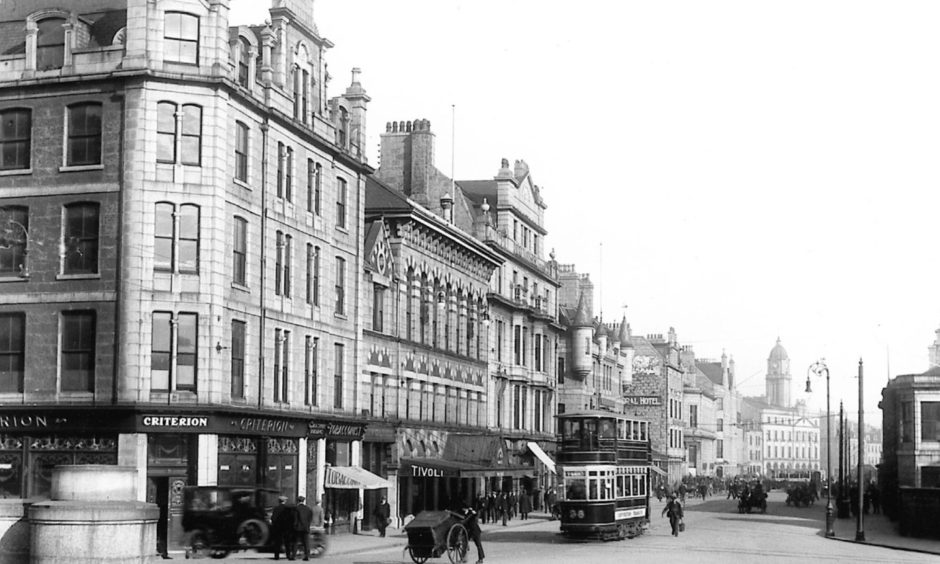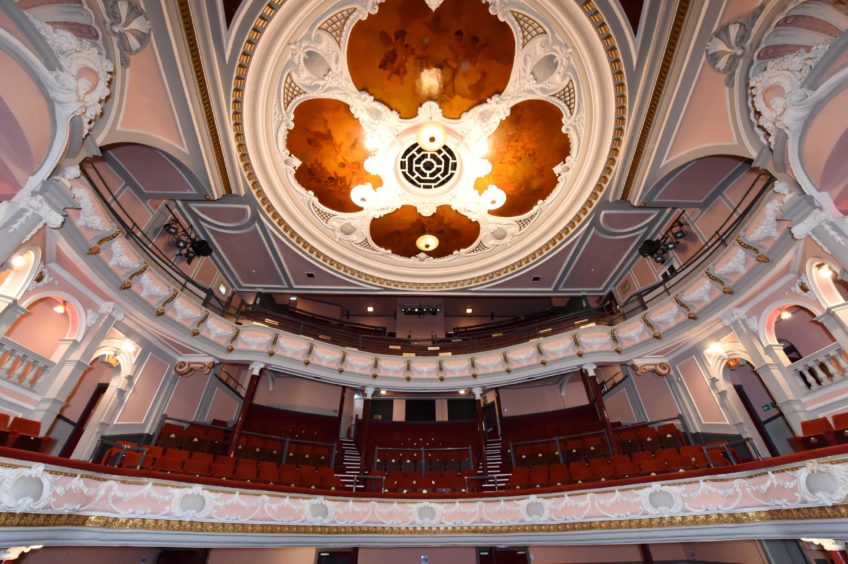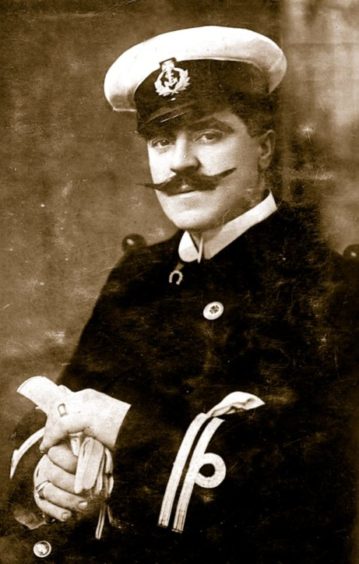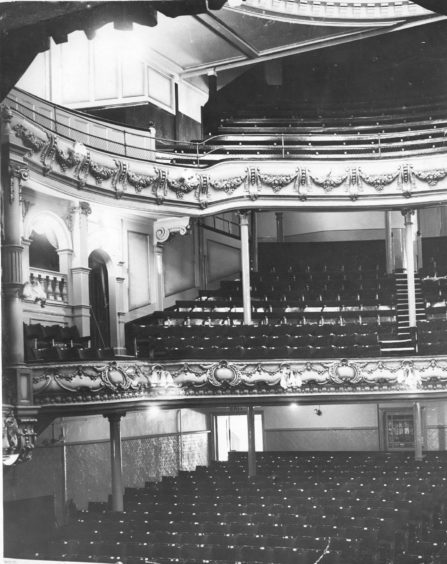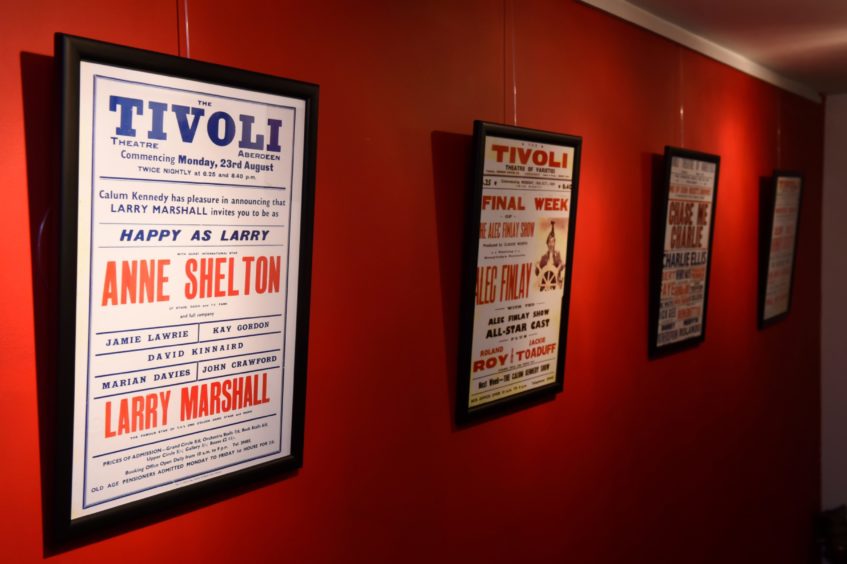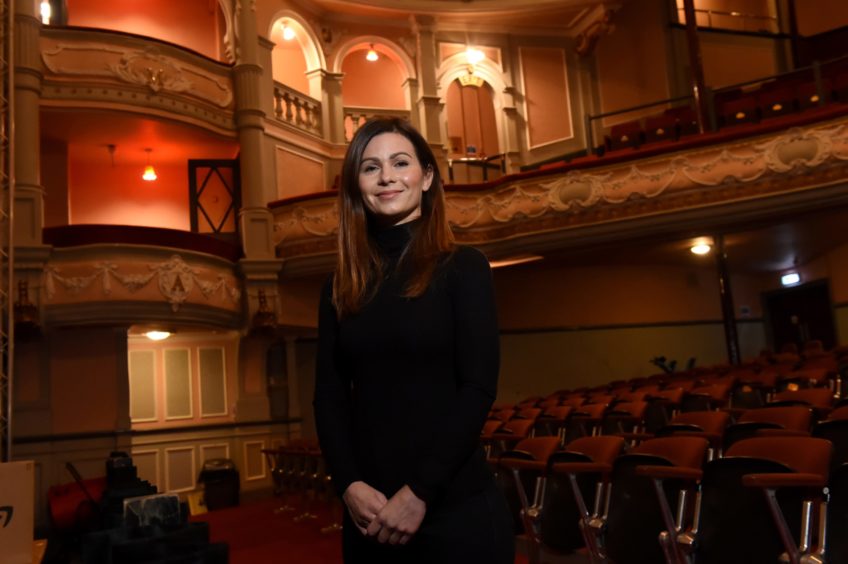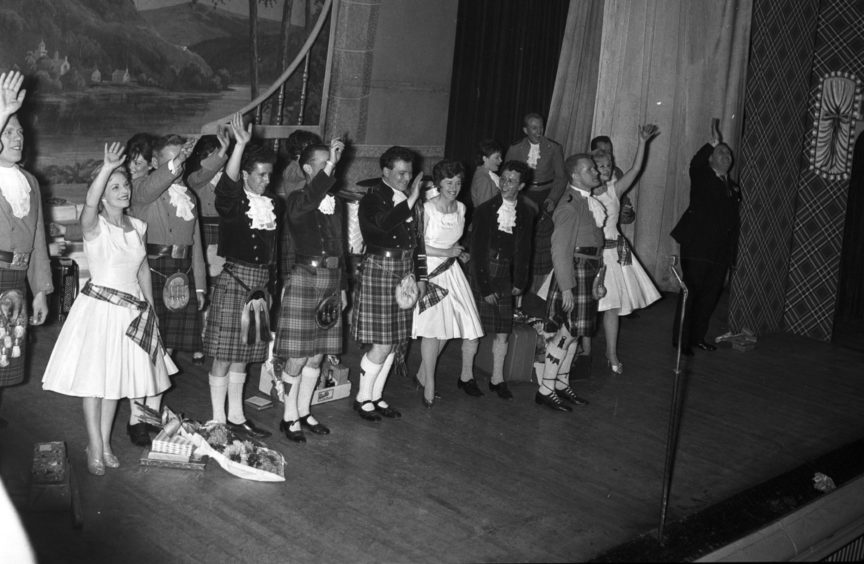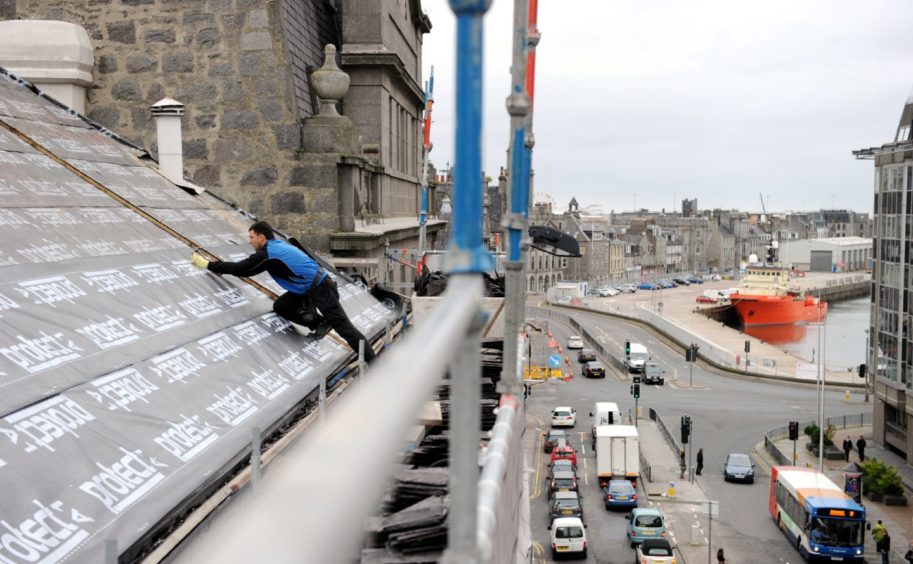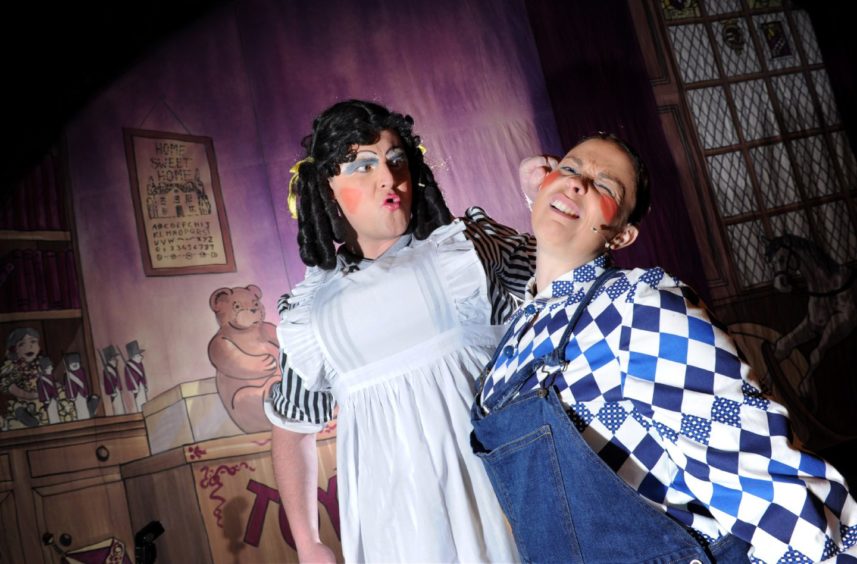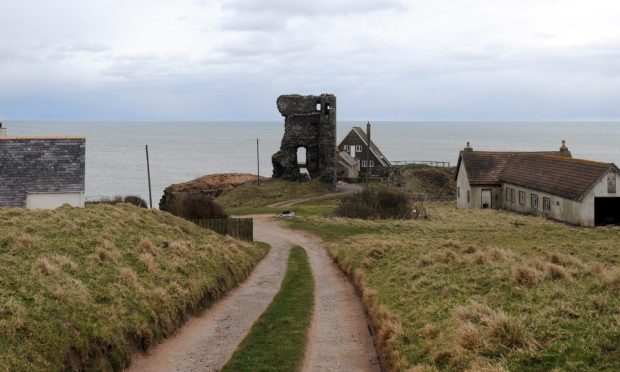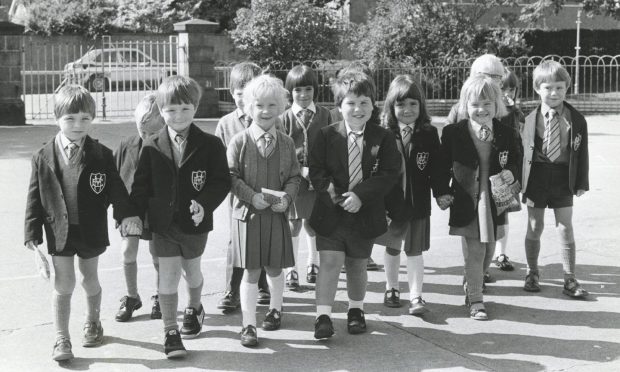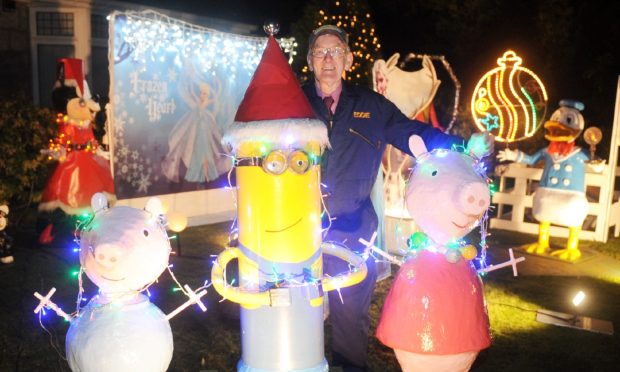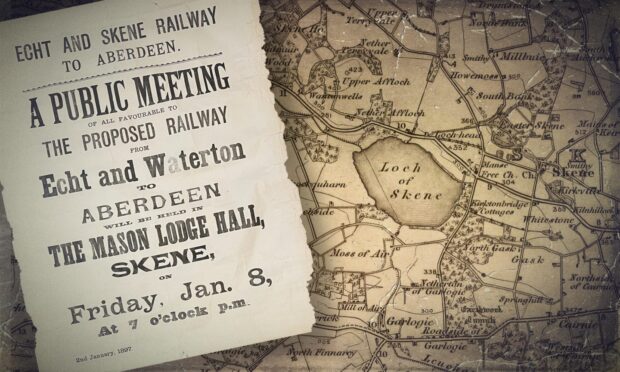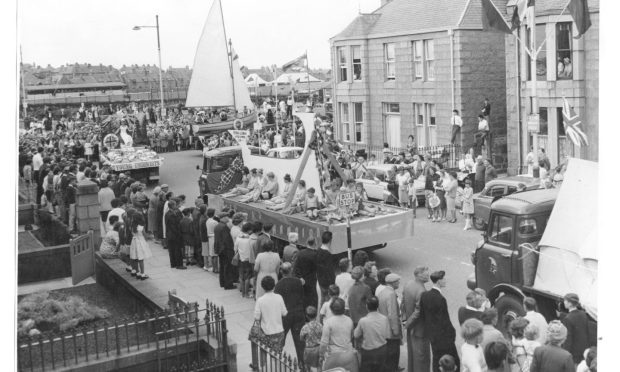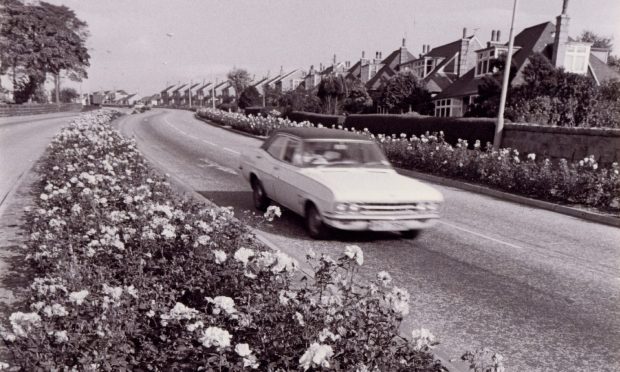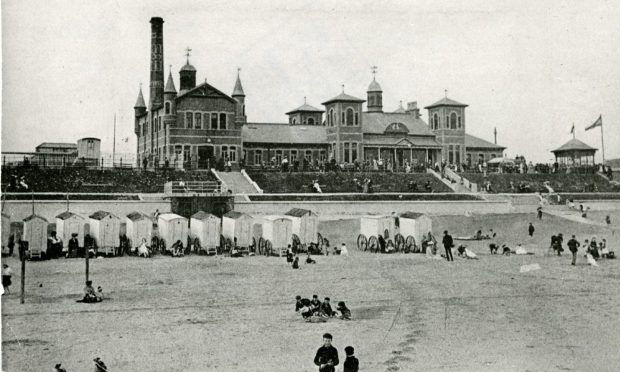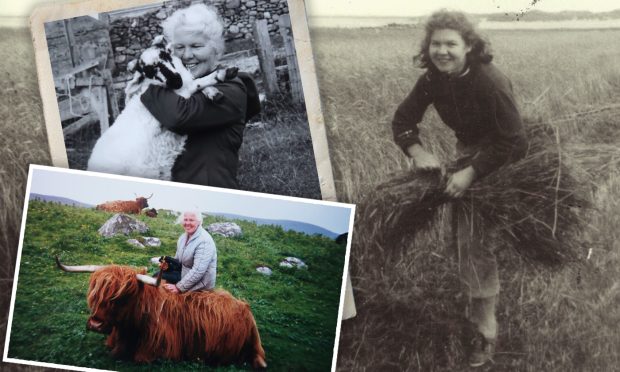Over the years, the Tivoli has been many things… Aberdeen’s first opera house, a theatre, a music hall, a bingo parlour.
But throughout its history it has always been the “people’s variety theatre” for the Granite City, loved for bringing great entertainment – and some stellar names – to its stage.
Now marking a milestone year – it is 110 years since it was first called the Tivoli – the grand old lady of Guild Street has another anniversary today. It is seven years since it burst back into life, after lying empty for decades, with the play Inferno, the first production to grace its stage since it closed as a theatre in 1966.
But Christina Camillo, sales and marketing manager for the Tivoli, said its story starts long before 1910.
“This is an 1872, Grade A-listed Victorian building and it was known as Her Majesty’s Opera House. The first play here was The Lady Of Lyons and that was in December of the year it was built,” she said.
“It was an opera house and could accommodate 1,774 people. All forms of plays, operas and pantos were performed here.”
Culture to the city
Her Majesty’s was built by a group of businessmen who wanted to bring culture to the city. They took on leading architect Charles Phipps, to create one of the grandest theatres of the time, at a cost of £8,400.
Her Majesty’s grew in popularity and in 1897, legendary theatre architect Frank Matcham was called in to rebuild the auditorium.
In a twist of fate, Matcham was to turn his talents to Aberdeen again several years later. Only this time it was to create the larger and luxurious His Majesty’s Theatre, which opened its doors on Rosemount Viaduct in 1906.
The original Her Majesty’s was briefly mothballed – but wasn’t forgotten by Matcham. He reconstructed the theatre in 1909, for it to open in 1910 under a new name – The Tivoli Theatre of Varieties.
With a new name and new look, the Tivoli entered a new era.
“Throughout the years, the Tivoli had comedians, jugglers, ventriloquists, magicians, illusionists. We had Aberdeen’s own Walford Brodie, one of the highest paid entertainers of the day. He did illusions, he was a magician and ventriloquist,” said Christina.
“He would tour the country with his Cage of Death and 30,000 volts of electricity would go through his body.”
Bodie’s appeal wasn’t just limited to the Tivoli or the Granite City. He was so popular he inspired both Harry Houdini and Charlie Chaplin. Chaplin imitated him on stage and in his Hollywood years.
The Macduff-born magician and Houdini became firm friends. In 1920, Houdini presented Bodie – known as “the Electrical Wizard” – with the real electric chair used in the first execution at Sing Sing Prison.
And Bodie wasn’t the only link between Chaplin and the Tivoli. Charlie played the theatre long before he became The Little Tramp and ruled the world of silent cinema.
Chaplin return visit
“He played here in 1917 and was under Frank Karno’s troupe… so Aberdeen audiences got a sneak preview of the genius that was Charlie Chaplin, without even knowing it,” said Christina.
Many years later Chaplin was holidaying in Scotland and actually made a return visit to the Tivoli, after it had become a bingo hall.
Christina said: “He came up to the front of the building in a taxi, but it was all locked up because it was closed for the day.”
Also appearing at the Tivoli under the Fred Karno banner was one Stan Laurel, before he teamed up with Oliver Hardy.
Other big name stars, whose fame still stands today, include Will Fyffe, Will Hay, and even WC Fields.
“We had international stars here throughout the 20s, 30s and 40s.” said Christina.
“It was very much a music hall and variety theatre. Lots of comedy and sketches and music. It was very big when Aberdeen was a holiday destination and its Scottish-themed summer shows were hugely popular.
“It was the people’s variety theatre,” said Christina, adding that legacy is behind the love for the Tivoli still very much in evidence among people in Aberdeen today.
“They would have come here when they were kids,” she said. “A lot of people would have performed here when they were young, in some of the shows. It holds a really special place in a lot of Aberdonians hearts. And it is Aberdeen’s oldest theatre.”
Christina added the architecture and Matcham’s design of the theatre adds to its mystique. “It just has that Edwardian grandeur.”
Phantoms of the old opera house
Every theatre has its ghosts… and the Tivoli is no different.
And there is more than one phantom wandering Aberdeen’s original opera house.
Christina said: “Apparently we do have a couple of ghosts wandering around the place, they have been seen floating about. There have been sightings backstage and at front of house as well.
“People have said they have seen a man going past in a black suit, but when you look again, nobody is there.”
Christina had her own encounter with the supernatural in the theatre, where she has worked for five years.
“I usually walk around the theatre in dark, which I know would scare some people. I was in the auditorium and my back was to the stage, when a man walked across the stage, whistling, clear as day. I turned around and shouted for one of the workers, but nobody was there.”
Christine said she immediately ran down stairs to check the doors were locked and no one else was around.
“That’s one I can’t explain and it still gives me the shivers when I talk about it,” she said.
“But they are good ghosts, they don’t bother us, we don’t bother them, we just leave them be.”
TV killed variety theatre
During the 60s, Scottish entertainer Calum Kennedy was very much the torchbearer for the Tivoli and its ever-popular variety shows, attracting 12,000-strong audiences for every week’s change of programme.
But with the rise of overwhelming competition from television, with many variety stars migrating from the theatres to people’s homes via the TV screen, the Tivoli couldn’t survive. It closed in 1966.
Not that Calum Kennedy, who passed away in 2006, went down without a fight, even right up to the last curtain call.
At the time, Calum, said: ‘’During 1963 going into 1964 I tried to see what could be done about saving it… I brought up some of the top acts from London, Tony Hancock, Frankie Vaughan and the Billy Cotton Band Show.
‘’But we could see the change was coming, people were getting more interested in other things like TV and, of course, bingo. It was very sad.”
Abandoned and empty
The Matcham theatre operated as a bingo hall until 1997 and was then all but abandoned, lying empty and in disrepair, ending up on the Buildings At Risk Register For Scotland.
In 2009, the building was bought by Brian Hendry, who set about the Herculean task of bringing it back to life and, once again, able to stage productions to entertain the people of Aberdeen.
That dream was finally realised on October 25 2013, when Inferno, an original play by Thomas Bywater, took to the stage for a week long run. The Tivoli was back.
Christina said: “That was followed by the local theatre group, Attic, who did their pantomime Robin Hood – there hadn’t been a panto here since 1962, which was Dick Whittington. But the Tivoli became the home for Attic.”
Since then, the Tivoli had been going from strength to strength, attracting new audiences and new productions, branching out into music gigs, including Hue and Cry and Ricky Ross.
We will be back
“In 2013 we had nine shows booked in for the whole year. From January to June 2020, we had 80 shows booked in,” said Christina.
But then came coronavirus and, once again, The Tivoli found itself dark.
However, over its long history, the theatre has weathered some severe storms. Christina is confident it will weather this one too.
“It will be a task, there’s no question. But we will get there. There’s no clear roadmap to when we can reopen, but when we do, the place will be ready. It will be a different theatre experience, but we are preparing for that day.”
To that end, the Tivoli has a JustGiving page with a target of £15,000 to help it through the pandemic.
“We are also doing raffle prizes on our Facebook page and we have seats we are selling off, so you can get plaque on a seat. The £15,000 is for safeguarding the future of the Tivoli and getting the building ready and safe for when we can re-open.
“We will come back stronger. We are one of Aberdeen’s vibrant community hubs, a place where everybody can come together and everyone wants to see the Tivoli thrive again. I think the future will be bright.”
If you want to help the Tivoli in these tough times, its JustGiving page is at www.justgiving.com/crowdfunding/tivolitheatreaberdeen
